Complete Guide to Growing
Sunflowers: Types, Care, Benefits & More
Sunflowers are one of the most beloved flowers worldwide, instantly recognizable by their large,
bright yellow petals and tall, sturdy stems. Known for their cheerful appearance, sunflowers are
not only a beautiful addition to gardens and fields but also offer a range of benefits, from
attracting pollinators to providing delicious seeds for snacks. Whether you're a seasoned
gardener or just getting started, growing sunflowers can be a rewarding and fun experience.

In this comprehensive guide, we’ll cover everything you need to know about sunflowers, including
the types, how to grow them, the care they require, common diseases, and the benefits they
provide. We’ll also share useful tips and FAQs to help you have a successful sunflower-growing
experience.

What Are Sunflowers?
The Champa flower has very deep and rich symbolism. This purity is considered to be the practice
of love and devotion, which makes it special in religious and cultural contexts. In India,
Champa flower is filled with devotion and is used in the worship of Lord Vishnu, Maa Durga, and
many other deities.
This flower has been used in ritualistic practices for many years. This is also a kind of love
practice, and some people use it to express their love. Its fragrance and colors make people
experience spiritual upliftment.
Types of Sunflowers
When people search for "types of sunflowers," they usually want to know what kinds of sunflowers
are available, as there’s a variety of them. Here are some of the most popular types:
Common Sunflower (Helianthus annuus):
This is the classic sunflower, with large, golden-yellow petals and a dark brown center. They can
grow up to 10 feet tall and are widely grown for both ornamental purposes and seed production.
Dwarf Sunflower:
These smaller sunflowers are perfect for small gardens, balconies, or pots. Dwarf varieties
typically grow between 1 to 2 feet tall and still produce beautiful blooms. Popular dwarf
sunflowers include Teddy Bear and Little Becka.
Giant Sunflowers:
As the name suggests, giant sunflowers grow to massive heights, sometimes reaching 12 feet or
more. They have large heads and are often grown for seed harvesting. Varieties like Mammoth
Russian are popular among gardeners who want to grow truly enormous flowers.
Red Sunflowers:
Red sunflowers have rich, maroon or dark red petals. These flowers add a unique and dramatic
touch to any garden. They are perfect for adding variety to your flower bed.
Teddy Bear Sunflower:
With their soft, fluffy, double blooms, Teddy Bear sunflowers resemble a cheerful bouquet. They
are compact, reaching about 2-3 feet tall, and are often favored for decorative purposes in
smaller gardens or containers.
Autumn Beauty Sunflower:
This variety features multi-colored petals that range from yellow to red, giving it an
autumn-inspired look. It’s a more unique variety and perfect for those looking for something
different in their garden.

How to Grow Sunflowers
(Step-by-Step Guide)
Growing sunflowers is relatively easy, even for beginners. Whether you’re planting in a garden,
flower bed, or pot, these steps will guide you:
Choose the Right Location:
Sunlight: Sunflowers need full sunlight to grow well. Make sure they get at
least 6-8 hours of direct sunlight each day to thrive.
Soil: Sunflowers prefer well-draining, fertile soil. Sandy or loamy soil is
ideal, with a slightly acidic to neutral pH (6.0 to 7.5).
Planting Sunflower Seeds:
When to Plant: Plant sunflower seeds outdoors after the last frost date in
spring when the soil has warmed up. You can start seeds indoors 3-4 weeks before the last frost
if you want to get a head start.
How to Plant: Dig a hole about 1 to 2 inches deep, and place 1-2 seeds in the
hole. Space the seeds 6 inches apart. For giant sunflowers, space them at least 1-2 feet apart
to give them room to grow.
Watering and Fertilizing:
Watering: Sunflowers need deep watering, especially when they are young. Keep
the soil moist, but avoid waterlogging. Once established, they are quite drought-tolerant but
still require water during dry spells.
Fertilizing: While sunflowers don't require heavy fertilization, you can apply a
slow-release balanced fertilizer to encourage healthy growth. Too much nitrogen can lead to
excessive leaf growth without blooming, so be cautious.
Thinning:
If you planted more than one seed per hole, thin the seedlings to ensure they have enough space.
Once they are about 6 inches tall, keep the strongest plant in each hole and remove the weaker
ones.
Support Tall Varieties:
Taller sunflower varieties may need staking to keep them upright, especially during heavy rain or
wind. Use a wooden stake or garden stake to support the plant.
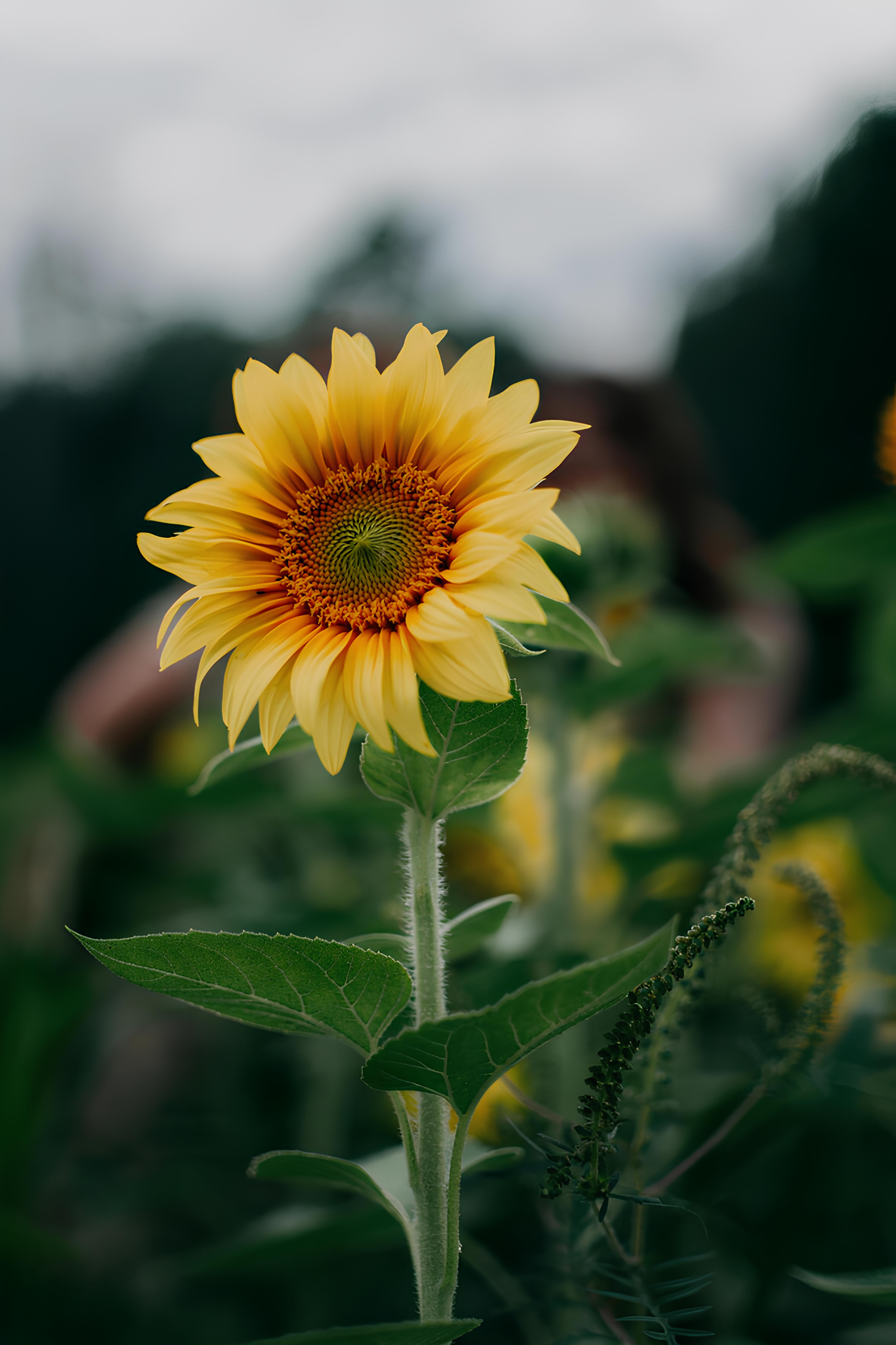
Care Guide for Sunflowers
Sunflowers are relatively low-maintenance, but following these simple care tips can ensure they
grow to their full potential:
Sunlight:
Ensure your sunflowers get at least 6-8 hours of direct sunlight daily. They thrive in sunny
spots.
Watering:
Water sunflowers deeply but less frequently once they’re established. Watering in the early
morning helps prevent fungal diseases.
Soil Health:
While sunflowers can grow in less-than-ideal soil, adding organic compost or a balanced
fertilizer can encourage healthier plants and more blooms.
Pest Control:
While sunflowers are generally pest-resistant, aphids, caterpillars, and slugs may sometimes be a
problem. You can use natural pest control methods like neem oil or introduce beneficial insects
like ladybugs.
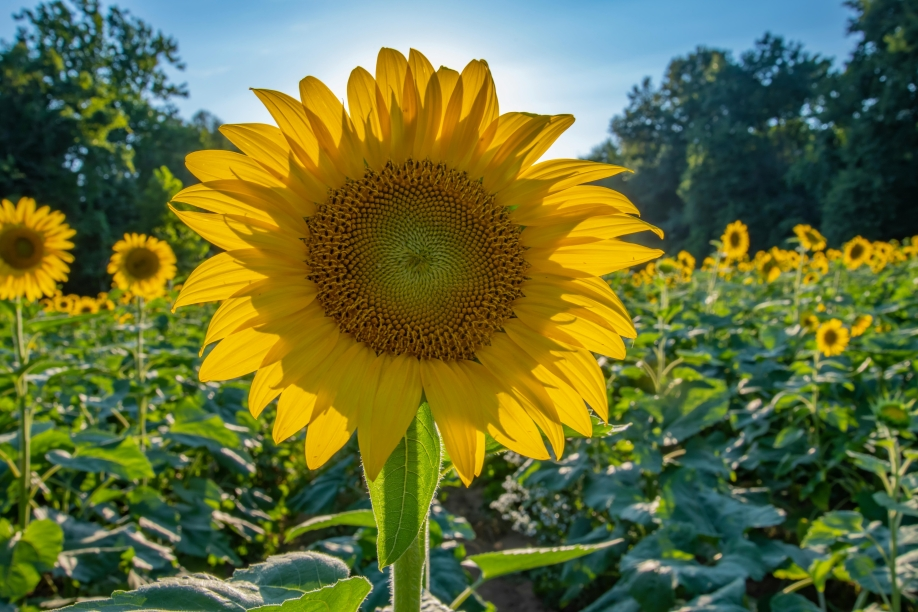
Common Diseases in Sunflowers
Sunflowers are tough plants, but like any garden favorite, they can be affected by a few common
issues. Here's how to handle them:
Powdery Mildew:
This fungal disease appears as a white, powdery layer on the leaves. To prevent it, make sure
your sunflowers have plenty of space for air to circulate, and remove any infected leaves as
soon as you spot them. Avoid overhead watering, as wet leaves can encourage the fungus.
Sunflower Rust:
This disease shows up as orange or rust-colored spots on the leaves. If you notice these spots,
remove the affected leaves right away to stop the infection from spreading. Like powdery mildew,
sunflower rust thrives in damp conditions, so avoid watering from above.
Downy Mildew:
Downy mildew causes yellow patches on the leaves and prefers cool, moist environments. To control
it, be careful not to overwater your sunflowers, and ensure there’s enough space between plants
to allow air to circulate freely.
Aphids:
These tiny pests can be a problem for sunflowers. If you notice aphids, gently rinse your plants
with a strong spray of water to dislodge them, or treat the plants with insecticidal soap to
help manage the infestation.

Benefits of Sunflowers
Sunflowers offer a variety of benefits, making them a valuable addition to your garden:
Nutritional Benefits:
Sunflower seeds are a rich source of protein, healthy fats, and vitamins like Vitamin E and B1.
They are great for snacking, baking, or adding to salads.
Attract Pollinators:
Sunflowers are excellent for attracting pollinators like bees and butterflies, which help improve
the health of other plants in your garden.
Bird Feed:
Once the sunflower heads mature and dry, the seeds are a food source for birds. You can harvest
them for your own use or leave them for wildlife.
Soil Improvement:
Sunflowers have long taproots that can help break up compacted soil, improving soil structure for
other plants.
Aesthetic Appeal:
Sunflowers are often grown purely for their visual appeal. They brighten up gardens, flower beds,
and even fields with their towering height and large, cheerful blooms.
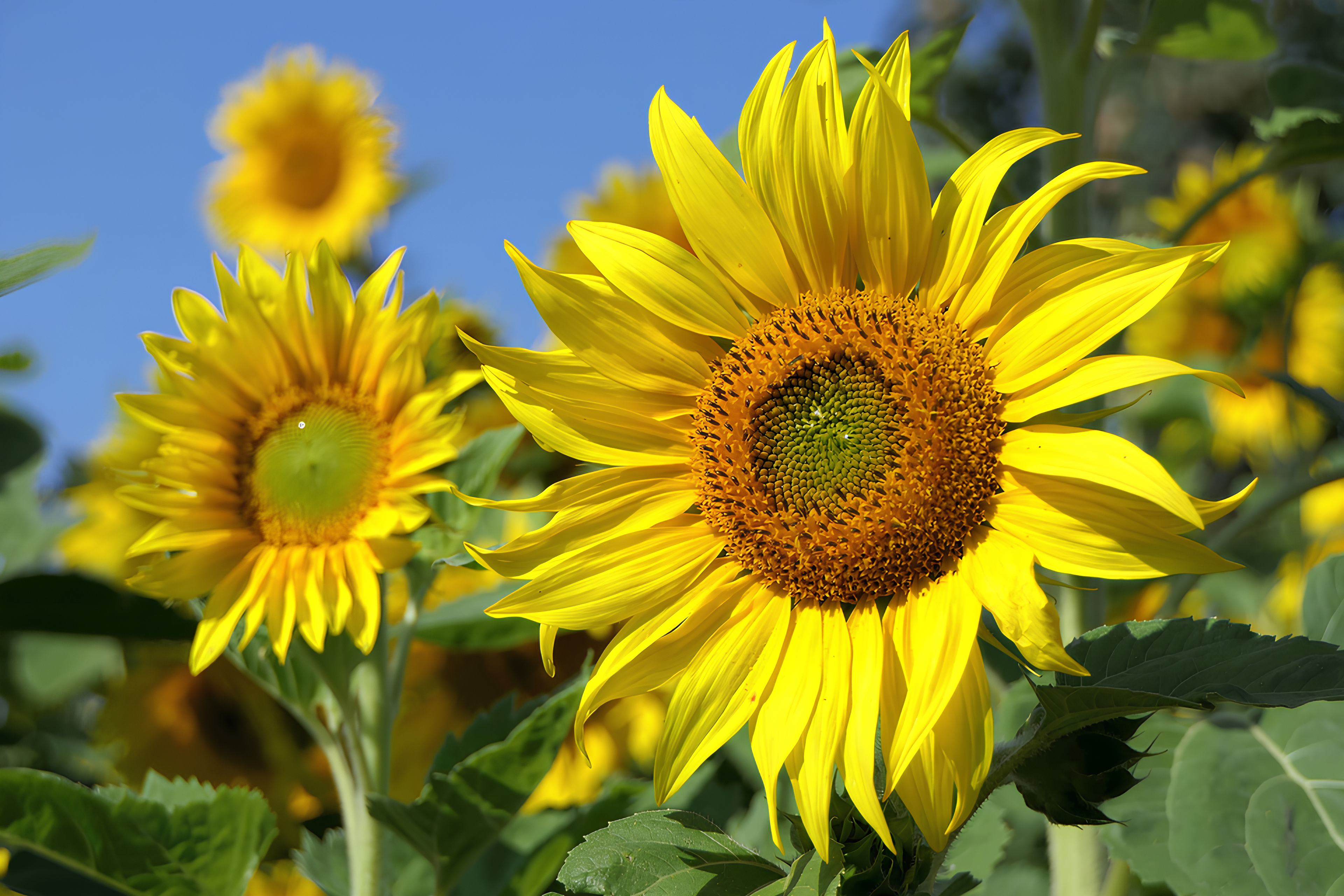
Growing Sunflowers: Tips for
Success
Plant in Clusters: Sunflowers are naturally sociable, so plant them in clusters for maximum
visual impact.
Water Properly: Water deeply but infrequently.
Control Weeds: Keep the area around your sunflowers free of weeds. Weeds compete for nutrients
and can stunt your sunflower’s growth.
Harvesting: Once the sunflower heads start to droop and the backs of the flowers turn yellow,
it's time to harvest. Leave them to dry in a well-ventilated area before removing the seeds.
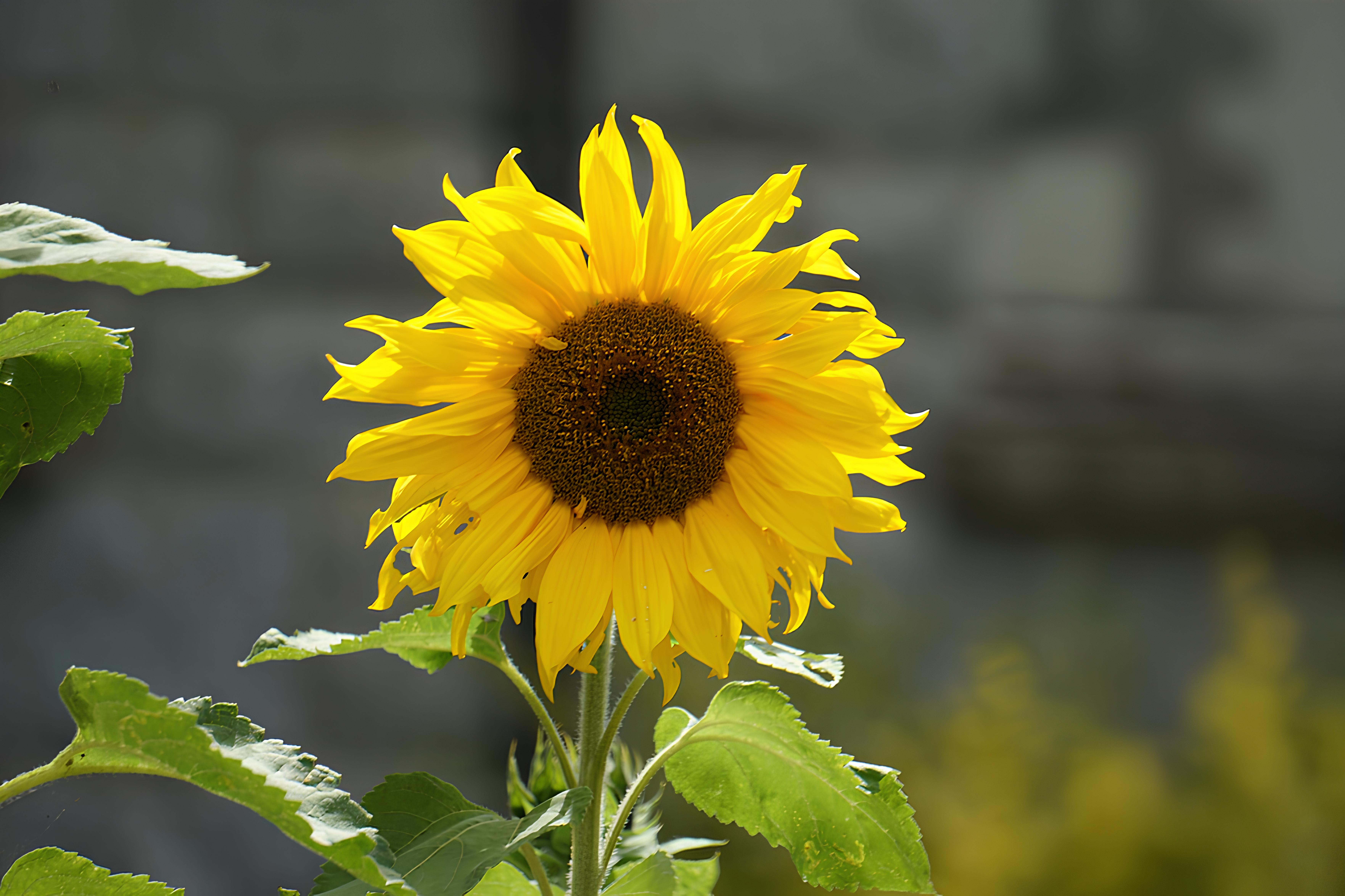
FAQs About Sunflowers
1. How long do sunflowers take to bloom? Sunflowers usually take between 70 to 100 days to bloom
after planting, though the exact time can vary based on the variety.
2. Can sunflowers grow in pots? Yes! Dwarf sunflowers are perfect for container gardening. Make
sure the pot is at least 12-18 inches deep.
3. Do sunflowers come back every year? Most sunflowers are annuals, meaning they only last for
one season. However, if the seeds fall to the ground, new plants may grow the following year.
4. Can sunflowers grow in the shade? Sunflowers require full sunlight to thrive and will not
bloom properly if planted in shaded areas.
5. How can I attract more bees to my garden? Sunflowers are great at attracting bees and other
pollinators. Planting a variety of sunflowers and other flowering plants will encourage more
bees to visit.
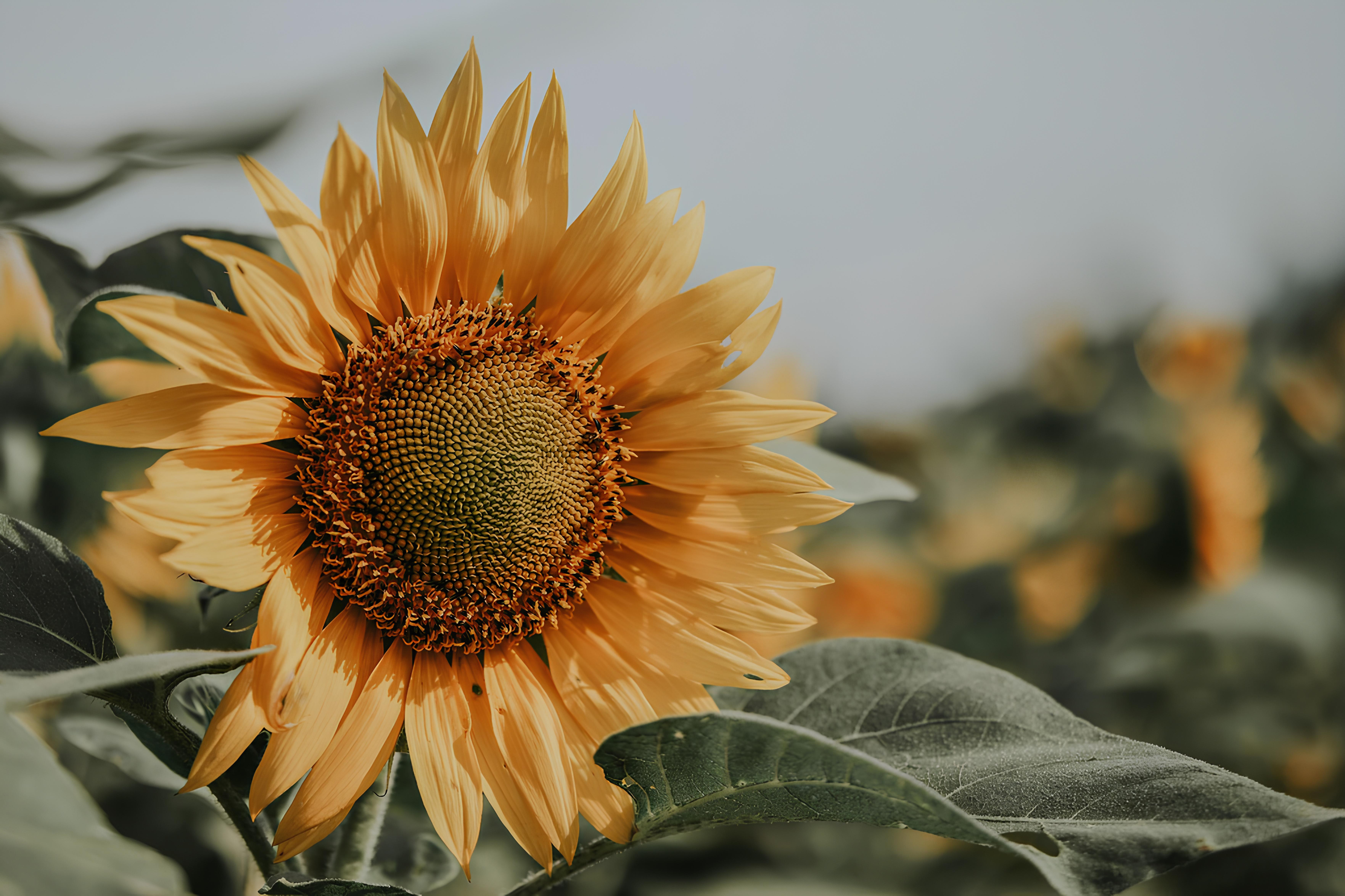
Conclusion
Sunflowers are not only one of the most beautiful and easy-to-grow flowers, but they also offer a
wide range of benefits, from providing food for wildlife to improving soil health. Whether
you’re growing them for their bright, cheerful blooms or for their tasty seeds, sunflowers are
sure to bring joy to your garden. By following the right care practices and growing tips, you
can enjoy a successful sunflower harvest and add a splash of color to your outdoor space.
With a little patience and attention, you’ll soon be reaping the rewards of your sunflower
garden—whether for decorative purposes, birdseed, or delicious snacks!







